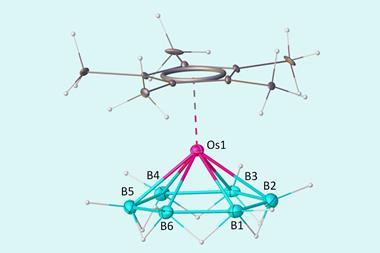The riddle of why a certain type of crystal leaps more than 10,000 times its length when exposed to light may have been solved by scientists in Russia and Japan. The crystals’ rapid movement is a result of stresses generated in the crystal when light induces a structural change within it.
The scientists, led by Elena Boldyreva of Novosibirsk State University, Russia, made crystals from the complex [Co(NH3)5 (NO2)]Cl(NO3). When photons hit the complex, it undergoes isomerisation – the nitrite ligand changes from being bonded through a nitrogen atom to being bonded through an oxygen atom. As the change is induced by light, there is a build-up of the reaction product perpendicular to the irradiated face and this causes extreme stress to build up in the solid. The material then ‘relaxes’, causing the layers to bend and crack, and the crystals to jump and break apart.
Boldyreva and her group hope that in the future this ‘vast mechanical macroscopic response’ could be used to create biomimetic materials.












No comments yet